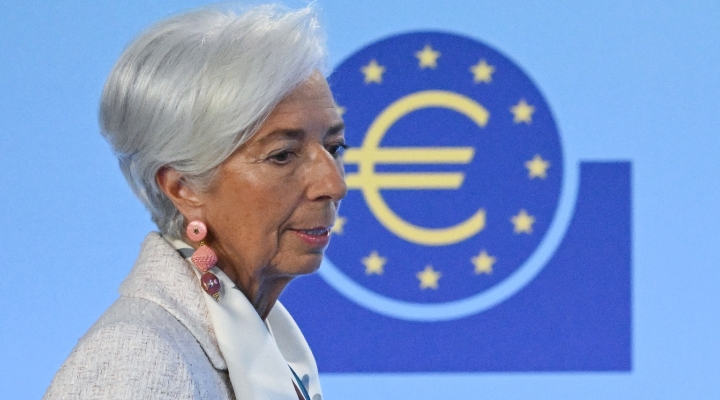
Since September 2023, the European Central Bank (ECB) has kept its key interest rate at record highs of 4.5%. In its first meeting of the year on January 25, the ECB’s governing council decided to maintain its policy stance, and did not give any hint of when rate cuts will happen. But inflation numbers have fallen since and the pressure is mounting to cut rates.
June is probably the soonest that the ECB may cut rates, says Michael Field, European market strategist at Morningstar. Money markets are currently pricing in less than a 50% chance that the ECB will start cutting rates as early as April. The next meeting is on March 7.
"We believe the stars are aligning for pending rate cuts," he says.
"With the ECB carefully weighing up a future interest rate cut, near-term data points are more important than ever, with inflation key,” he says. “While it remains highly unlikely that we will see a rate cut at the next meeting in March, European investors are at least hoping for a more dove-ish tone to the statement, tee-ing up near-term rate cuts.“
ECB Rates Decision: A Divided Council
ECB board member Isabel Schnabel told the Financial Times in early February that inflation “could flare up again”. The “last mile” of getting inflation down will be the hardest, she said. "We see sticky services inflation. We see a resilient labour market. At the same time we see a notable loosening of financial conditions,” she said.
But comments by Italy's central bank chief Fabio Panetta show how divided the council is. In a separate interview, he told the newspaper that the time for cutting rates is “fast approaching”. Striking more doveish tones than Schnabel, he dismissed fears of a fresh inflation spiral and said inflation in the euro area was falling faster than expected.
Inflation Trend Backs the Rate Cut Case
December's spike in inflation, albeit a technicality, fed into the bank's conservative stance of keeping rates on hold. January's fall in inflation however adds to the argument for cutting rates.
The consumer price index growth in the Eurozone fell to 2.8% in January, down from 2.9% in December, which matched economist’s expectations. Core inflation, which shows prices without energy and food costs, fell 10 basis points to 3.3% year on year, and missed expectations. But it is still moving in the right direction.
“European flash inflation fell in January by 0.1% to 2.8%, a welcome downward move after the spike we saw in December,” says Michael Field. “Core inflation, albeit higher at 3.3% is also moving in the right direction, mirroring the 0.1% fall. That core inflation, usually stickier, is still falling, is indeed a positive sign.”
There is some concern that military tensions in the Red Sea will keep prices elevated, particularly in Europe, says Amundi Global Asset Management. Thus, the central bankers’ job is difficult as they aim to maintain rates at a restrictive level for the right amount of time.
No Rate Cuts Before June?
A significant slowdown in current wage increases and further progress on inflation are required for a rate cut in April, says Steven Bell, economist at Columbia Threadneedle Investments. Since there is no meeting in May, the next date for a rate cut is not until June.
The economists at ING concur. “The ECB is expected to cut rates from June onwards, but more cautiously than the market is currently anticipating,”, says Peter van den Houte of ING. The decline in core inflation, now at 3.3% year on year, is likely to slow. But wage growth remains too high for comfort.
“ECB President Christine Lagarde clearly stated that the disinflation process would have to advance further for the central bank to be sure that it is sustainable,” van den Houte says. “This led her to conclude that a rate cut before summer remains unlikely. We think June is still likely for a first 25bp rate cut. But thereafter, the ECB is likely to reduce interest rates only gradually. While the market already anticipates short rates at 2.5% by the end of this year, we only see that level in the second quarter of 2025.”
Eurozone GDP Concerns
Meanwhile the eurozone continues to be plagued by growth concerns. The eurozone gross domestic products (GDP) contracted in the third quarter, but stagnated in the fourth quarter, narrowly avoiding a technical recession.
Early indicators for January are mixed. The composite PMI indicator rose in January, but remained below 50, indicating continued economic contraction. The economic sentiment indicator from the European Commission saw significant progress in December but that was not sustained in January.
The Eurozone’s largest economy Germany is meanwhile stuck in a recession. The Ifo indicator fell to three-and-a-half year low. Industrial production declined by 1.6% in December on a monthly basis, and was down 1.5% in 2023 overall compared to the previous year. Exports fell by 4.6% in December and 1.4% across the year.
“Germany, once the powerhouse of Europe, is now tagged ‘the sick man of Europe’ appearing as it does to be in the middle of a technical recession (two consecutive quarters of negative GDP growth”, said Keith Palmer, portfolio manager at Columbia Threadneedle.
Mortgage Rates Stay Elevated
Borrowing costs across the Eurozone meanwhile stay elevated. Mortgage rates increased further to 4%, the ECB said in its recent Economic Bulletin. Bank lending rates for firms meanwhile declined. Demand for credit from both households and firms fell in the first month of the year.
But consumers are expecting mortgage rates to decline from their current levels over the next 12 months, according to the ECB’s Consumer Expectations Survey. “A large, but declining, net percentage of survey respondents perceived credit standards to be tight and expected housing loans to become harder to obtain over that same period”, according to the mid-January survey.
Mortgage markets function very differently among Eurozone countries. While Germans existing homeowners are less affected by rising mortgage rates as lending terms are usually fixed for 10- or 15-year- periods, Spanish homeowners, for instance, might be suffering more through exposure to variable rates.
Will the Fed Lead the Way on Rate Cuts?
Still, the ECB has much more leeway to cut rates than its counterpart on the other side of the Atlantic. Last year, markets expected that central banks would start cutting rates simultaneously, and that is why even here in Europe there was such a focus on the Fed, says Morningstar’s Field. But the US economy is more resilient, so the Fed has a more difficult task, Field adds. Europeans should not be looking at the US to lead the way in monetary easing. And the prospect of a March rate cut by the Fed seems now to be less likely after recent CPI data. Markets are now looking at May for the first US interest rate cut.




























